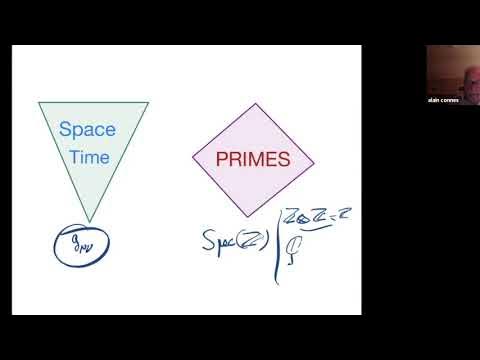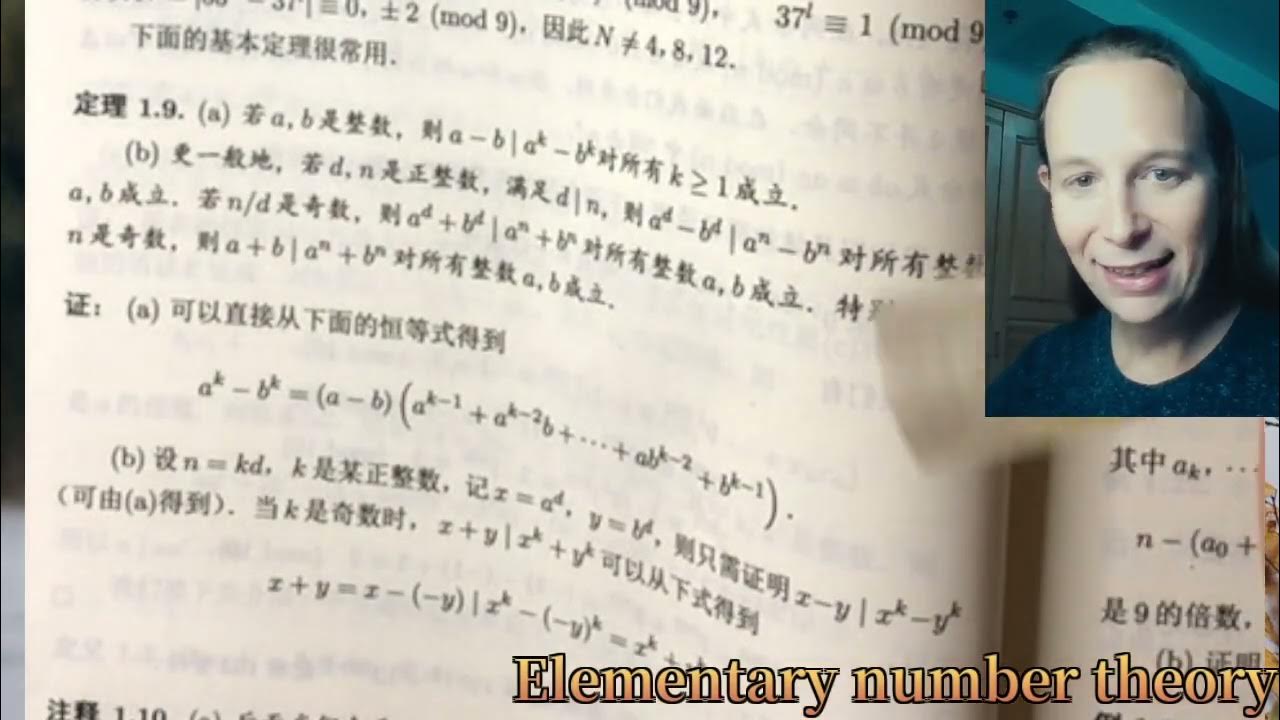Introduction to Noncommutative Geometry
Noncommutative geometry is a branch of mathematics that incorporates ideas from both geometry and algebra. In traditional geometry, one studies the properties of geometric shapes and spaces using concepts such as points, lines, curves, and their interactions. In contrast, noncommutative geometry focuses on understanding geometric objects using algebraic structures, specifically noncommutative algebras.
In standard algebra, the multiplication of elements is commutative, meaning that the order of multiplication does not matter. However, noncommutative algebras allow for noncommutative multiplication, where the order of multiplication of elements does matter.
Noncommutative geometry extends the ideas of traditional geometry to noncommutative algebras, enabling the study of geometric objects that may not have a straightforward geometric interpretation. Instead, these objects are described using algebraic structures and their relations.
One of the key notions in noncommutative geometry is the idea of a “noncommutative space.” A noncommutative space is a mathematical object that generalizes the notion of a geometric space, but with additional algebraic structure. Noncommutative spaces can be described using tools from both algebra and geometry, allowing for a deeper understanding of their properties and interactions.
Noncommutative geometry has applications in various areas of mathematics and physics. For example, it has been used to study quantum field theory, where the noncommutativity of spacetime coordinates is a crucial aspect. It has also found applications in number theory, topology, and the study of symmetry in physics.
Overall, noncommutative geometry provides a powerful framework for studying geometric objects using algebraic methods. By considering noncommutative algebras and their relations, noncommutative geometry allows for a more flexible and abstract approach to understanding the intricate structures of various mathematical and physical phenomena.
Applications of Noncommutative Geometry in Physics
Noncommutative geometry is a mathematical framework that generalizes traditional geometry by allowing noncommutative algebras to be used in place of the commutative algebras of functions on a space. This mathematical formalism has found applications in various areas of physics, including quantum field theory, string theory, and condensed matter physics.
One of the most well-known applications of noncommutative geometry is in the study of quantum field theory. In traditional quantum field theory, one typically works with fields defined on a smooth space-time manifold. However, in noncommutative quantum field theory, space-time is described by noncommutative coordinates, which do not commute with each other. This noncommutativity is then encoded into the algebra of field operators. The noncommutativity leads to interesting phenomena such as UV/IR mixing, where ultraviolet divergences in quantum field theory are related to infrared divergences. Noncommutative field theories have been studied extensively and have been used to address various problems in particle physics and cosmology.
Noncommutative geometry has also found applications in string theory, a theoretical framework that aims to unify all fundamental forces in nature. In string theory, space-time is described by a curved manifold, and the dynamics of strings are governed by a conformal field theory. However, noncommutative geometry provides a natural framework to study string theory in environments with non-trivial backgrounds, such as curved space-time or certain types of fluxes. This has led to the development of noncommutative geometries called “noncommutative deformations” of traditional spaces, which provide a description of string theory on curved backgrounds.
Another area where noncommutative geometry has been applied is condensed matter physics, particularly in the study of topological states of matter. Topological states of matter are exotic phases of matter that exhibit novel properties, such as protected edge states or topological invariants. Noncommutative geometry has been used to model such systems and provide a mathematical framework to describe their properties. In particular, noncommutative geometry has been used to study topological insulators, topological superconductors, and other topological phases of matter.
Overall, noncommutative geometry has found widespread applications in physics, particularly in quantum field theory, string theory, and condensed matter physics. Its ability to capture the noncommutative nature of space-time and provide a mathematical framework to study physics in such environments has made it a powerful tool for understanding fundamental phenomena in nature.
Noncommutative Geometry and Quantum Mechanics
Noncommutative geometry is a branch of mathematics that deals with spaces and geometric structures where the concept of “commutativity” does not hold. In classical geometry, commutativity refers to the fact that the order in which mathematical operations are performed does not affect the final result. However, in noncommutative geometry, this property is abandoned, and the order of operations becomes significant.
Noncommutative geometry has found applications in various areas, including theoretical physics, particularly in the study of quantum mechanics. In quantum mechanics, the behavior of particles and physical systems is described by mathematical objects called operators. These operators do not always commute, meaning that their order of composition matters.
One way to understand the relation between noncommutative geometry and quantum mechanics is through the mathematical framework of Hilbert spaces. In traditional quantum mechanics, the states of a system are represented by vectors in a Hilbert space. The observables (properties that can be measured) of the system are represented by operators acting on these vectors.
In noncommutative geometry, the concept of a space is generalized, and it is represented by a collection of operators acting on a Hilbert space. These operators do not necessarily commute with each other, reflecting the noncommutative nature of the geometry. This approach allows for a more flexible description of physical systems, where the structure of space itself can be modified.
Noncommutative geometry also provides a natural framework for incorporating symmetries, such as the ones described by Lie groups, into the quantum mechanical description. These symmetries play a crucial role in determining the behavior of particles and physical systems.
Moreover, the concepts and techniques developed in noncommutative geometry have been applied to various branches of theoretical physics, including quantum field theory, string theory, and quantum gravity. It has provided new insights and mathematical tools to tackle difficult problems in these fields.
In summary, noncommutative geometry provides a mathematical framework that goes beyond classical geometry and is particularly suitable for describing the noncommutative nature of quantum mechanics. Its applications have had a significant impact on theoretical physics, allowing for a deeper understanding of various fundamental phenomena.
Noncommutative Geometry and Quantum Field Theory
Noncommutative geometry is a branch of mathematics that generalizes the classical concept of a space by allowing for noncommutative algebraic structures. In classical geometry, the commutative property holds for the multiplication of functions or coordinates, meaning that the order of multiplication does not matter. However, in noncommutative geometry, this property is relaxed, and the multiplication of functions or coordinates does not necessarily commute.
Noncommutative geometry provides a mathematical framework to study spaces with noncommutative algebraic structures. These spaces can be represented by noncommutative algebras, where the multiplication of elements is noncommutative. The motivation behind studying noncommutative geometry arises from various perspectives, including physics, mathematics, and philosophy.
In the context of physics, noncommutative geometry has found applications in quantum field theory. Quantum field theory is a theoretical framework that combines quantum mechanics and special relativity to study particles and their interactions. In traditional quantum field theory, the underlying spacetime is assumed to be a commutative manifold. However, in some theories, particularly those involving gravity or high-energy physics, there are indications that the underlying spacetime might have a noncommutative structure. Noncommutative geometry provides a mathematical description for such spacetimes and allows for the study of quantum field theories on noncommutative backgrounds.
Noncommutative geometry in quantum field theory has led to interesting results and insights. For example, it has been shown that noncommutative field theories can exhibit interesting phenomena, such as UV/IR mixing, which relates high-energy and low-energy physics in a nontrivial way. Moreover, noncommutative geometry has provided a mathematical framework for understanding the so-called gauge/gravity duality, which relates certain noncommutative field theories to gravitational theories in higher-dimensional spaces.
In summary, noncommutative geometry provides a mathematical framework for studying spaces with noncommutative algebraic structures. Its applications in quantum field theory have led to interesting results and have provided insights into the nature of spacetime and particle interactions. The study of noncommutative geometry and its connection to quantum field theory remains an active area of research with potential implications for fundamental physics.
Noncommutative Geometry and String Theory
Noncommutative geometry is a mathematical framework that generalizes traditional geometry by allowing for noncommutative algebraic structures. In this framework, the multiplication of geometric objects is noncommutative, meaning that the order in which objects are multiplied affects the final result.
String theory, on the other hand, is a theoretical framework in physics that seeks to describe the fundamental nature of particles and forces by treating them as tiny vibrating strings. It is a candidate for a theory of quantum gravity that aims to unify all fundamental forces of nature.
Noncommutative geometry has found applications in string theory. In fact, string theory provides a natural physical context where noncommutative geometry can be used to describe the behavior of certain fundamental objects. In particular, the spacetime in which strings propagate takes on a noncommutative structure at small scales.
There are several ways in which noncommutative geometry is employed in string theory. One approach is to consider noncommutative versions of traditional geometrical objects, such as noncommutative spaces or noncommutative manifolds. These noncommutative spaces can then be used to study various aspects of string theory, such as the formulation of string interactions or the understanding of black holes.
Another application of noncommutative geometry in string theory is the construction of dualities. Dualities are mathematical equivalences between different descriptions of the same physical system, and they play a crucial role in the study of string theory. Noncommutative geometry provides a powerful tool to study and establish such dualities, shedding light on the underlying structure of string theory.
Overall, the marriage of noncommutative geometry and string theory has led to significant insights and advancements in both fields. It has opened up new avenues for understanding the fundamental nature of the universe and has the potential to revolutionize our understanding of physics at its most fundamental level.
Topics related to Noncommutative geometry
From physics to noncommutative geometry and back – YouTube
From physics to noncommutative geometry and back – YouTube
Explained: Noncommutative Geometry | alt-clips – YouTube
Explained: Noncommutative Geometry | alt-clips – YouTube
Alain Connes | Noncommutative Geometry, the Spectral Aspect – YouTube
Alain Connes | Noncommutative Geometry, the Spectral Aspect – YouTube
2.3 A. Connes : Non-commutative geometry – YouTube
2.3 A. Connes : Non-commutative geometry – YouTube
Nigel Higson: A rapid tour through noncommutative geometry – YouTube
Nigel Higson: A rapid tour through noncommutative geometry – YouTube
Alain Connes: On the Notion of Space – YouTube
Alain Connes: On the Notion of Space – YouTube
Studying an elementary number theory textbook – YouTube
Studying an elementary number theory textbook – YouTube
Roger Penrose explains Godel's incompleteness theorem in 3 minutes – YouTube
Roger Penrose explains Godel's incompleteness theorem in 3 minutes – YouTube
Great interview of Dr. David Suzuki with Dr. David Bohm, physicist, colleague of Dr. Albert Einstein – YouTube
Great interview of Dr. David Suzuki with Dr. David Bohm, physicist, colleague of Dr. Albert Einstein – YouTube
Sir Michael Atiyah – From Algebraic Geometry to Physics – a Personal Perspective [2010] – YouTube
Sir Michael Atiyah – From Algebraic Geometry to Physics – a Personal Perspective [2010] – YouTube

Konstantin Sergeevich Novoselov is a Russian-British physicist born on August 23, 1974. Novoselov is best known for his groundbreaking work in the field of condensed matter physics and, in particular, for his co-discovery of graphene. Novoselov awarded the Nobel Prize in Physics. Konstantin Novoselov has continued his research in physics and materials science, contributing to the exploration of graphene’s properties and potential applications.










